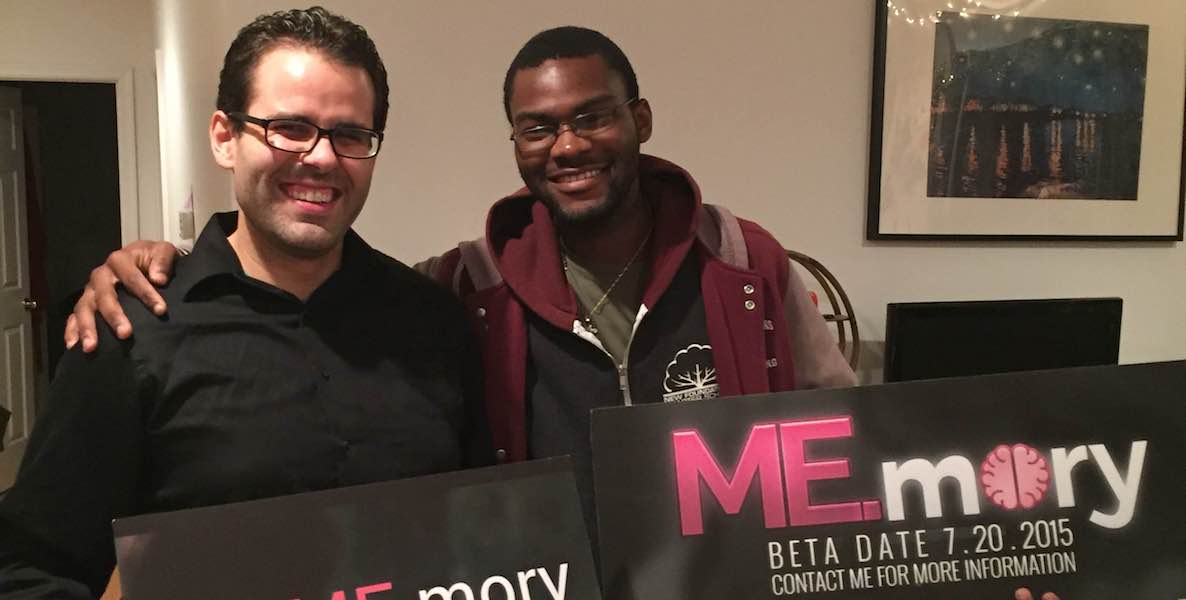Chris Molaro, co-founder of Neuroflow, doesn’t mind the fact that I’m 10 minutes late to our interview. As a matter of fact, he sees it as a teachable moment.
“We don’t have a lot of science about how the mind interacts with the body,” he says. “When you’re stressed, and you’re on the I-95, and you’re late for something, that’s not just in your head. That’s something physiologically manifesting itself. Your heart rate changes, your alpha waves increase, your EEG level changes. That’s all data.”
Very gracious of him. And very apropos, considering Molaro’s business: Along with his partner, Adam Pardes, he launched Neuroflow in 2016 to chart neurological movements in real time during psychiatric sessions in order to make diagnosing mental illnesses easier. Neuroflow uses a head set attached to a patient’s head to examine and electroencephalogram (EEG) readings in real time, during psychological examinations.

This information can help doctors determine whether the brain is experiencing normal reactions to inquiries, or whether something abnormal is going on which would indicate a malfunction associated with post traumatic stress disorder (PTSD). Simply put, with Neuroflow, it won’t take a shrink to empirically determine whether or not you’re suffering from PTSD, or to delineate the totality of a recent cranial trauma: A simple, consumable readout will chart your brain’s measurables and help determine the diagnosis.
Michael Platt, MD, the director of the Wharton Neuroscience Initiative at Penn, says that could be a serious help for psychiatrists and neurologists. “There is a growing need for software that can seamlessly integrate multiple data streams for physicians. As more and more biological data becomes available, including but not limited to physiological measures, genetic data, and personal data, there is increasing opportunity to personalize medicine and optimize it to the patient’s needs in the moment,” he says. “Neuroflow could provide just such a system.”
For Molaro, creating a way to better diagnose PTSD was a personal mission. A West Point grad, he served in the Army for six years—including a tour of duty in Iraq—before leaving with the rank of captain. He graduated Wharton with an MBA this year, and has been active in trying to build careful, considerate initiatives based around his experiences. He’s a board member at INsite, which hooks up graduate students from disparate backgrounds with a two-year leadership program; and he’s a co-founder of nonprofit Things We Read, which takes book recommendations and makes donations to currently-deployed Army personnel based on those recommendations.
Though Molaro himself never experienced any long-term PTSD, he says he knows many young men and women who came home suffering from the ailment. But the way they were diagnosed and treated was alarmingly anemic. Upon discharge, soldiers are given a routine PTSD examination. You’d think—given the thousands and thousands of Americans who have returned from tours of duty with post-traumatic stress—the exam would be fairly comprehensive, to determine whether a warrior is coming home with the condition, right? Wrong.
“The standard military test for determining whether or not you have PTSD consists of five questions,” says Molaro. In a sense, he says, it’s a matter of practicality; tens of thousands of veterans are discharged from the military every year, and though the examination may be spartan, efficiency drives the armed forces—and medical and psychiatric inquiries are often no different.
With Neuroflow, it won’t take a shrink to empirically determine whether or not you’re suffering from PTSD, or to delineate the totality of a recent cranial trauma: A simple, consumable readout will chart your brain’s measurables and help determine the diagnosis.
But Molaro bristles at the apparent lack of urgency involved in fixing how vets are tested for the disorder. According to the Veterans Administration, nearly a third of all Vietnam veterans suffer from post-traumatic stress, as do more than 10 percent of all Iraq and Afghanistan veterans. PTSD has repeatedly been linked to the military suicide epidemic, with those who suffer from PTSD being considerably more likely to kill themselves than their peers who don’t.
And the current rate of veteran suicide is appalling—20 veterans per day, on average, end up taking their own lives. With modern neurological technology, Molaro sees a chance to perhaps change the way veterans are diagnosed with PTSD—and to stem the tide of self-harm that has overtaken the armed forces.
The main apparatus that Neuroflow uses is a plastic half-crown that the user wears on the forehead and above the ears—like a sci-fi tiara. For all intents and purposes, it looks kind of like a movie prop or a gussied-up version of that game where you control the height of a ball with your mind (it’s real, I swear). The apparati used by Neuroflow have been on the market for a while now. They’re typically priced at between $50 and $500, and have been used by neurologists to help quantify brain function, but not specifically to target and diagnose PTSD and TBI.
The software developed by Neuroflow engineers breaks down this neurological data—cranial blood flow, EEG, brainwaves and the like—and makes it easily accessible to both psychiatric professionals and patients alike, through charts and simplified analysis. This would take some of the ambiguity out of diagnosing brain trauma and PTSD—an efficiency even the armed services might find useful.
Neuroflow has so far pulled in an impressive number of accolades, and an equally impressive amount of early funding. Since its inception, the company has won the Wharton Venture award, the Greater Philadelphia Veterans Network Shark Tank award, and took first place at the Wharton Health Care Club conference; they were a national finalist of TigerLaunch, a major, Princeton-run collegiate entrepreneurial competition in 2016. Most of these awards, according to Molaro, are worth between $5,000 and $20,000. They’ve also received a research grant from the Bruce and Marsha Moskowitz Foundation. Neuroflow is currently running three separate pilot programs, and the results of those pilot programs should be available in the coming months.
For Molaro, creating a way to better diagnose PTSD was a personal mission. A West Point grad, he served in the Army for six years—including two tours of duty in Iraq—before leaving with the rank of captain. Though Molaro himself never experienced any long-term PTSD, he says he knows many young men and women who came home suffering from the ailment.
The harder part has been convincing neurological professionals of Neuroflow’s value to the field; they’re reluctant to believe that psychiatric data can be easily quantified in a digestible way. Recent studies conducted by the company of hundreds of practicioners, Molaro says, sum it up perfectly.
“The question is ‘Do you think mental health can be quantifiable, do you think it could be possible to make it objective?’ In the course of our work, we found that about three quarters of those surveyed said ‘no,’ or were skeptical,” he says.
At the same time, those same neurological and psychiatric professionals, when asked if qualifiable, objective brain data would help them in their work, “almost unequivocally” said yes, according to Molaro. This seems to mean that while psychiatrists are not ready to cede the human element in their field, they are looking for more tangible ways to diagnose their patients. That’s an opening for Neuroflow.
And indeed, Molaro says several psychiatric and medical firms have expressed interest in Neuroflow, which he and Pardes have demonstrated at trade shows and to investors over the past year. The young company is not yet profitable, but Molaro says they expect the clinical research and the gaping need to create an increasing demand for their technology.
To him, that couldn’t happen too soon: The country’s longest war is still going on, and every day, soldiers are returning home with trauma. For the Army vet with a disruptive idea, that’s every day when a better solution could already be in place.
Correction: An earlier version of this story said Neuroflow measures cerebral blood flow. It does not.






